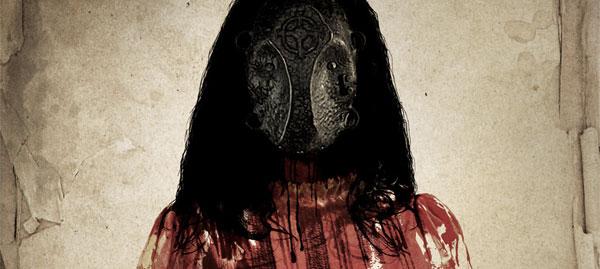
The Shrine (Movie Review)
If you and a friend were to walk from a well lit room with no windows into the bright afternoon sunlight and look at one another you would automatically register and accept the difference in the quality of light. This is because the color temperature of the midday sun is in the neighborhood of 5500 on the Kelvin scale and incandescent light bulbs register at about 2700-3300 Kelvin. For those who aren’t all that familiar with it, Kelvin is a temperature measurement not unlike Fahrenheit and Celsius and it plays a sizable role in determining how films, photos and video are lit. While you and I can observe and accept the changes in light based on environment and get on with our lives without much thought, a cinematographer needs to be acutely aware of how to mix different light sources to achieve optimum exposure while still maintaining a consistency of illumination, to keep the viewer from picking up on any change. In other words if two movie characters leave a well lit interior room and walk out in to the sun they better goddamned well look to be in different light.
“The Shrine” is the latest film by Jon Knautz, the director of the intermittently fun “Jack Brooks: Monster Slayer”. “The Shrine” follows an unlikably ambitious newspaper reporter named Carmen, her intern Sara and her nearly estranged boyfriend and photographer Marcus as they set out to solve the mysterious disappearance of a young backpacker in rural Poland. Carmen misleads her editor into believing that she is following up a story in Kansas and instead jets off to Poland with her cohorts. The group treks into some well paved woodlands to a place called “Alvania”. Which by the way is the name of a small sea snail, though I suspect that didn’t factor into the writer’s naming so much as did the desire to use the suffix “vania” to make it all sound a little more creepstern European. Anyway, the villagers are stuck in time somewhere between Zygmunt the Old and The Warsaw Pact and they ‘don’t take kindly to strangers pokin’ thur nose in wheres it don’t belong’ or whatever the polish equivalent of that phrase happens to be.
After being chased out of Alvania proper, Carmen and Sara venture into an eerie, unmoving fog bank on the edge of the village while Marcus waits in the woods. The mist houses a sinister statue of a demon; the two women emerge a little spooked by the experience and they all decide to leave town. Before they can set off a young girl offers to take them to find the missing backpacker. Sure enough, in a remote shack they find the body of the dead traveler along with several other corpses. In short order the three are taken prisoner by the villagers and Carmen and Sara are subjected to a strange rite. Carmen begins to see demons in the faces of her captors and the trio is pulled into a violent conflict that may have eternal repercussions.
There are aspects of “The Shrine”’s story that are ooky and passages of the film that create some serviceable tension. There is not, however, enough good to make up for it’s yawn-rich 30 minute 1st act. To make matters nearly unbearable by the time we reach the village the audience has been asked to invest heavily in a central character we can’t possibly like. One who seems like she was written by someone who had an axe to grind with aspirant women. Within one act's time we have also been marched through a series of flat interiors which should contrast dramatically with the natural foreboding of the Polish (Ontario, CN.) countryside. They don’t, and this goes back to the lighting dynamics that I brought up at the start.
As a horror fan I am used to all manner of low-budget lighting schemes. Some of my favorite horror films are small pictures that require the audience to journey through an underlit universe where the characters often disappear into black corners of the screen. I don’t mind losing some information or taking stylistic chances (ala “Evil Dead” ) to serve specific aesthetics. What I hate deeply is by-the-numbers lighting. Even when it is technically well done (I’m looking at you Platinum Dunes), it is codifying art with the intention of eliminating challenges to the viewer's senses, and to my mind and it has no place in horror. What is even worse is when a DP and director shoot for that sanitized aesthetic and come up short out of sheer negligence. The daylight sequences in “The Shrine” find our players wandering about under plainly artificial light that is supposed to pass for sunlight. When they are not bathed in electric light out of doors the actors are likely to be standing in front of a green-screened forest awash in the brutal fire of poorly filtered 5k tungsten light.
I was going to lament the fact that Knautz had lost the sense of humor that made “Jack Brooks: Monster Slayer” reasonably entertaining, or the fact that the exteriors look to have been shot on the set of PBS’s “Frontier House”. I was going to rail against having Canadian actors sporting Chuck Liddell haircuts playing salt-of-the-earth peasant roles and spouting flat Polish. I was also going to point out that the statue in the woods scene is effectively tense, but what is the point? This movie fails out of the gate because it shoots for something slick, safe and professional looking and can’t even reach that low water goal. Twenty people watching dailies and they all fail to spy basic lighting failures, Sweet Mother of Conrad Hall!

